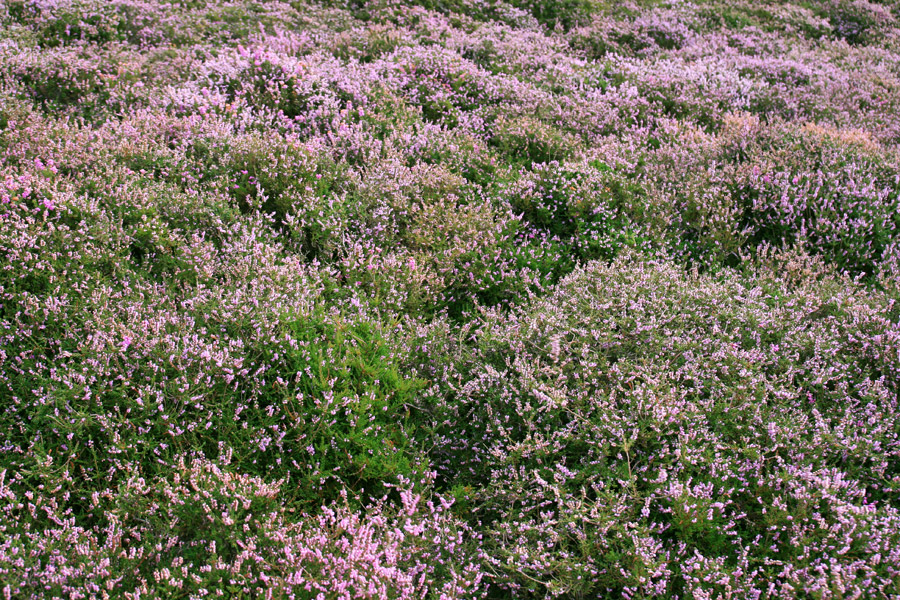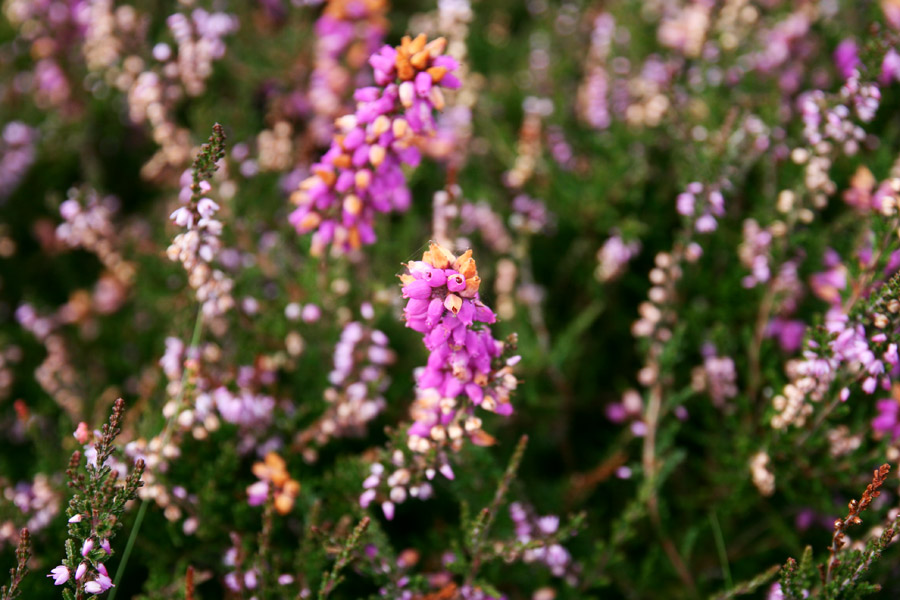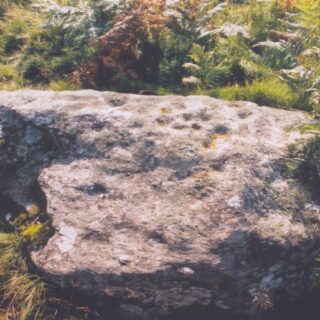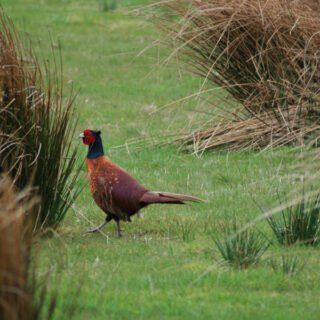Continuing with our car hire experiment, we tried a slightly different approach this weekend and hired a car from Hertz for first thing Saturday morning in the hope that it would get us on the road earlier than usual. Inevitably we left at (almost) the same time as usual.
That’s being slightly unfair on ourselves, we were ahead of our usual schedule and managed to visit somewhere before lunchtime. We were heading down the coast of East Lothian towards a couple of castles we’ve not yet managed to visit, but on the way we planned to call in at Oldhamstocks, where a castle once stood.
Before we got there though we had to stop to take a photo of a freshly-harvested field, the overcast sky in stark contrast to the stubble below.
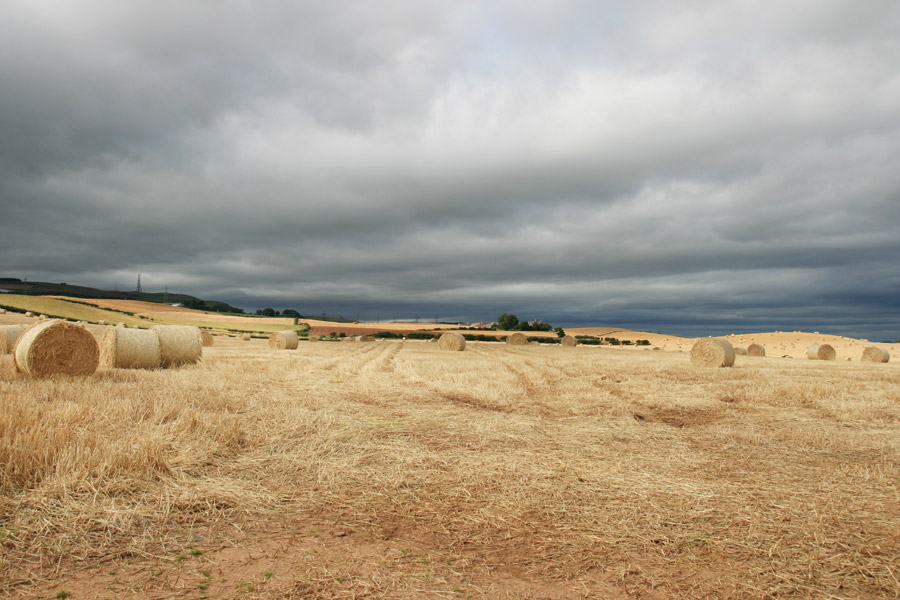
A few minutes later we were in the village of Oldhamstocks, a picturesque little settlement with an ancient origin. The parish church as it currently stands was largely built in 1701, however its foundations date back to at least the 14th century, and a church dedicated to St Michael is said to have been founded here in 1242.
Projecting from its east end is a burial aisle built in 1581, so pre-dating the church to which it is attached, belonging to the Hepburn family, and the Hepburn coat of arms are displayed on the gable end.
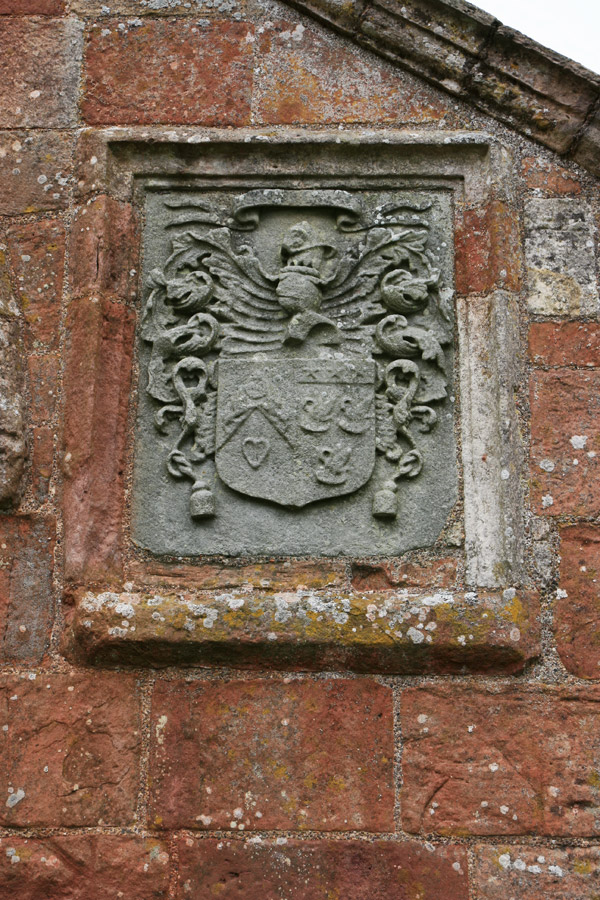


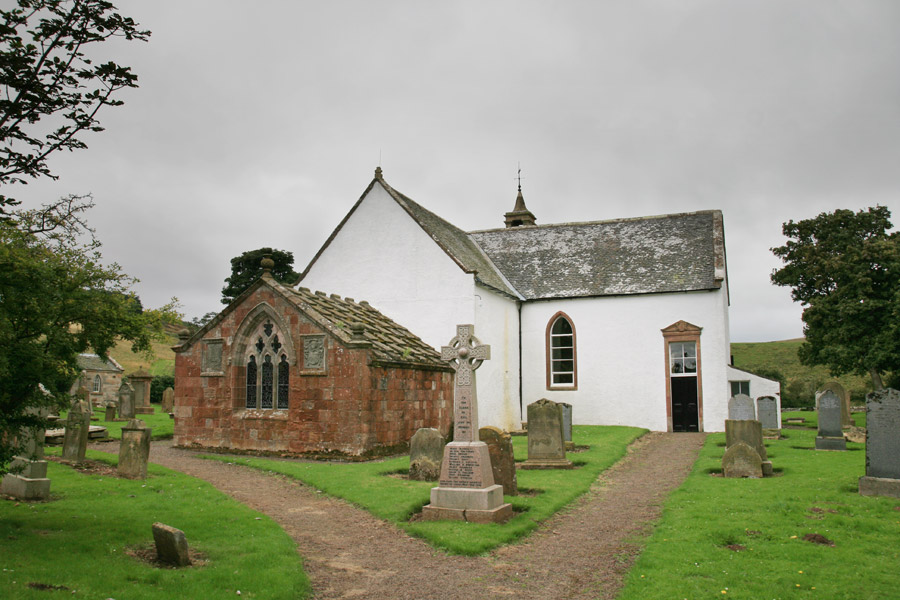
Across the road from the church is the site of Black Castle, which belonged to the Hepburn family. There were apparently still some ruins visible in the 19th century, but nothing of it now remains and the site is just a field.

We continued on to the hamlet of Crowhill and parked at the converted farm steading there. Just beyond the end of the last house in the village there is a well hidden stile through the wall, obscured by layers of ivy, which gives access to the Scottish Wildlife Trust’s Thornton Glen nature reserve. The reserve is long and narrow, with a path clinging to the edge of a steep-sided wooded gorge.
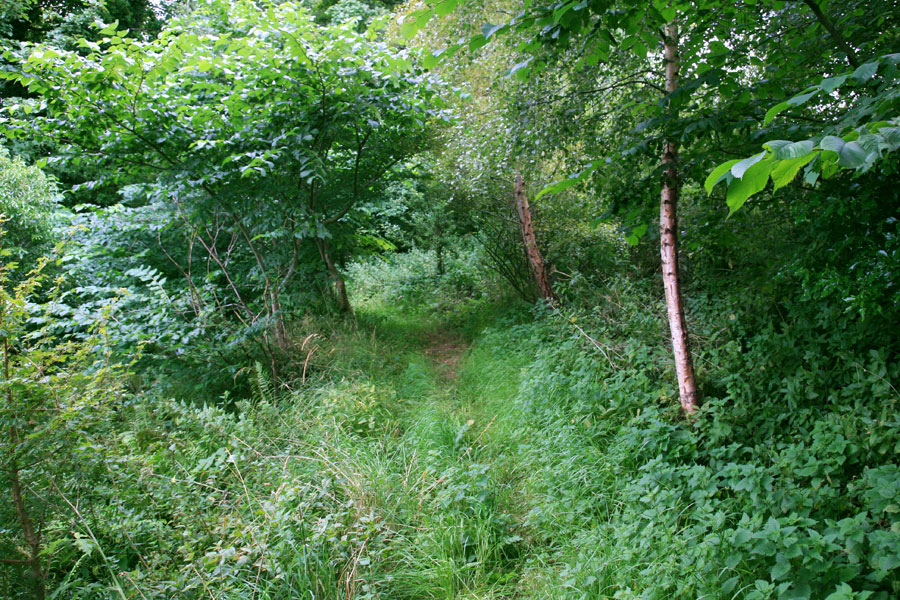
At the bottom of the gorge flows the Thornton Burn, on its way out to sea, the red bedrock making it a rust-coloured ribbon twisting its way through the deep greens of the glen.

After several minutes of walking through the woodland one is greeted by the looming substantial remains of Innerwick Castle.

The castle sits on a rocky promontory high above the burn below, and its naturally defensive position has been enhanced by the excavation of a rock-cut ditch further separating it from the surrounding land.

Built to protect the border from English attacks, it inevitably saw a lot of action, and was burnt to the ground in the early 15th century and mid-16th century, leaving it as the ruin that can be seen today.

The rich red colour of the local rock creates a wonderful contrast with the lush greenery in this protected glen.
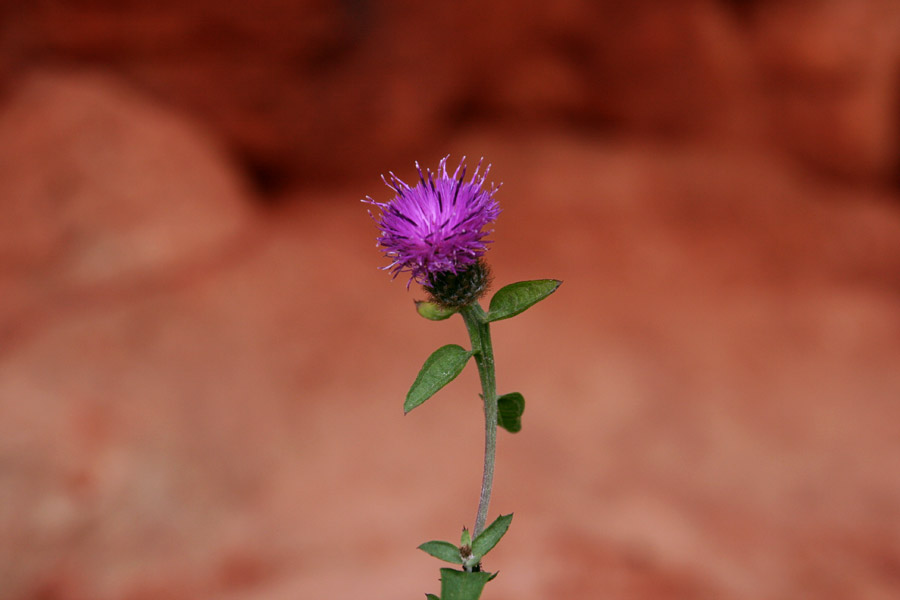
While the outer wall of the first floor, perched on top of the rock, is largely plain save for a couple of windows, above it are hints of architectural features within, with the top of a vaulted arch just visible.
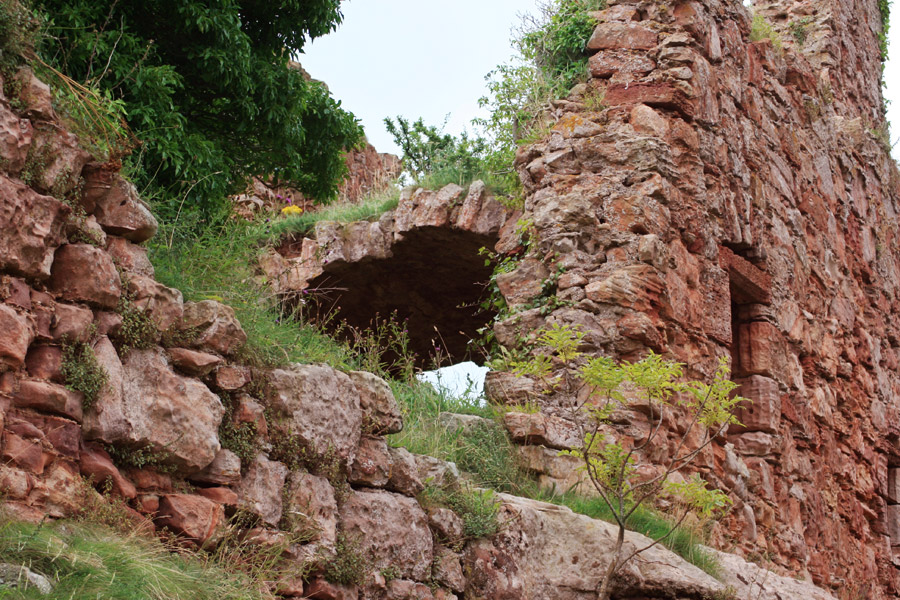
Despite being largely hidden from view in the glen, the castle has evidently suffered from weather erosion over the years, the wind and rain having sculpted weird and wonderful shapes in the stones.

At the north corner of the site are the remains of a tall square tower which extends down further into the ditch, evidently standing to almost its full original height with a slightly corbelled-out parapet still visible.

Through the ruined wall of this tower it’s possible to climb up onto the first floor level of the castle, which brings you to a vaulted tunnel at the end of which is an entrance with a pointed arch doorway.

Passing through the arch leads you into a hallway with several more doorways leading off into the rooms of the first floor.

The most impressive of which is the room with the vaulted roof, now open at both ends due to the walls having fallen, but with the arch itself largely intact.

Next to this room is an intriguing smaller chamber with an unusual pointed arch ceiling.

After a bit of exploring we returned along the entrance tunnel.
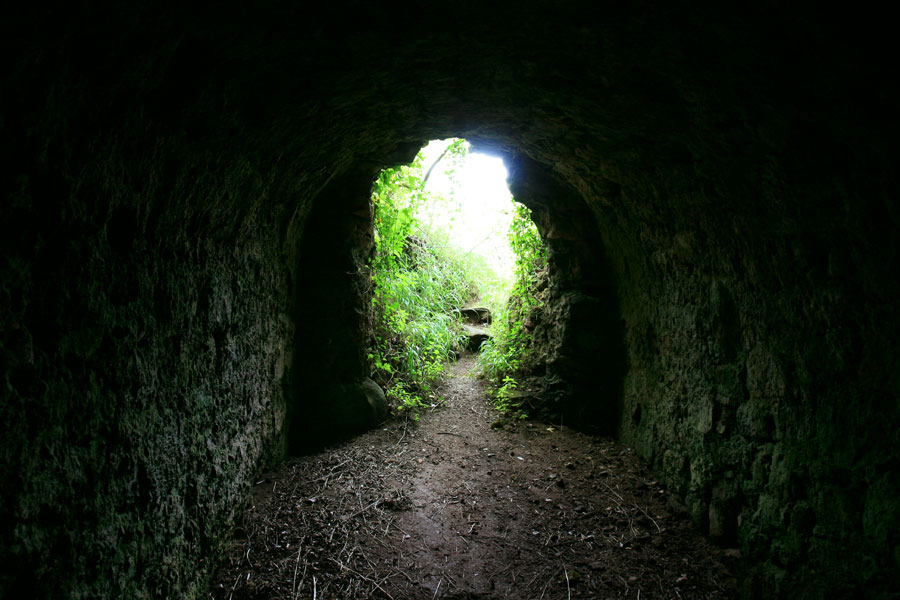
From this level you can view the upper section of the tall north tower, now a precarious ruin with two sides missing.

A second circular tower would have given access to the upper floor of the main castle, and the remains of the treads of a spiral staircase can still be seen.

In the south wall of the main room is a small window looking down along Thornton Glen.

Innerwick Castle is a really impressive castle, well worth visiting, and it was a great place to stop for lunch.
After which, we headed to the coast of Berwickshire to visit another tricky to reach castle. Parking at the car park next to Dowlaw Farm, we set off along the coastal path which eventually leads to Fast Castle. The path passes through thick heather, which was blooming in a glorious mix of pinks and oranges.

After several minutes of walking towards an ever disappearing horizon, Fast Castle finally comes into view.
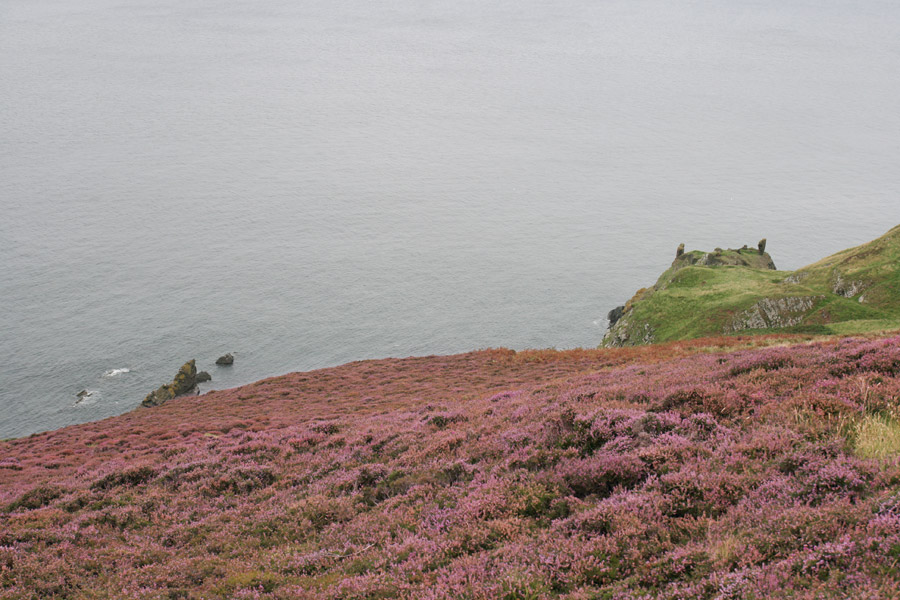
The path moves out of the heather and onto grass as it begins its steep descent to the castle – this is probably not a good place to visit after rain, or in winter! The castle occupies a position on a rocky headland jutting out into the sea, connected to the land behind by a narrow rock causeway.

The castle has evidently suffered over the centuries, but massive sections of masonry still exist.

Including one large section precariously overhanging the end of the promontory.

The view along the coast from the castle is rather spectacular, with cliffs, inlets and stacks combining to make a multi-layered landscape.

One of the chunks of masonry has corbels still attached to it. Given the fact that one of the corbels projects out from the corner, it would seem that these were external corbels supporting a parapet walkway.


Below the castle is a deep hole which would appear to be a the quarry from which much of the building material was obtained. It also adds to the defences of the castle above, in the unlikely event anyone managed to scale the treacherous cliffs below.

There’s a lot of birdlife on this coast, and there were gannets and various gulls flying around us the whole time we were there. We were lucky enough to see a cormorant coming in to land on a rock below the castle.


The north-west side of the castle has been built up out of the rock, and it’s still possible to see the footings of a round tower at the entrance – probably part of a gatehouse defending the narrow approach – and square towers beyond.

The way the castle clings to the rock is quite amazing, and it must have been quite a feat to build it.

The walk to get here is quite long, but certainly worth it. Not only do you have a castle at the end of it, but along the way there are wonderful views out across the sea and coast.
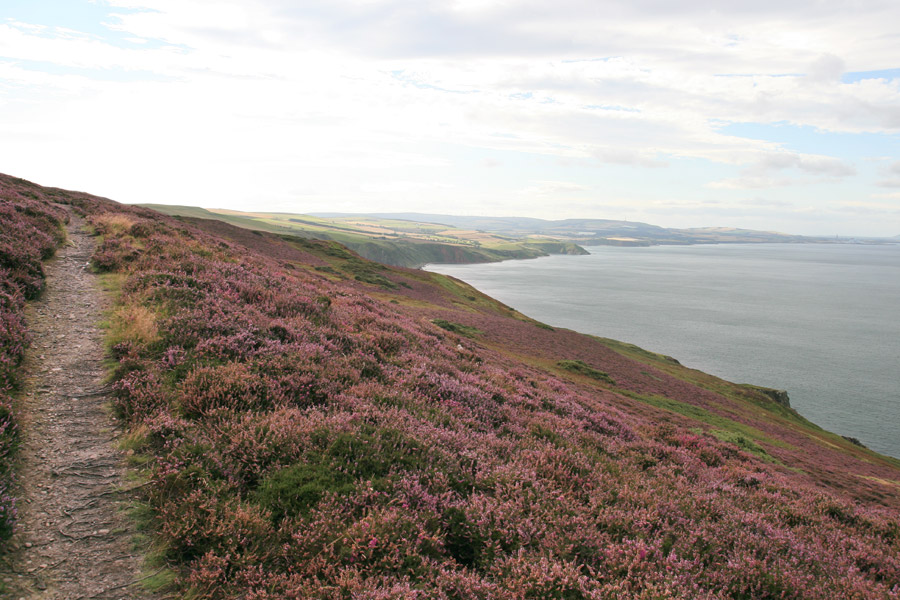
Not to mention the beautiful heather, if you time it right!
